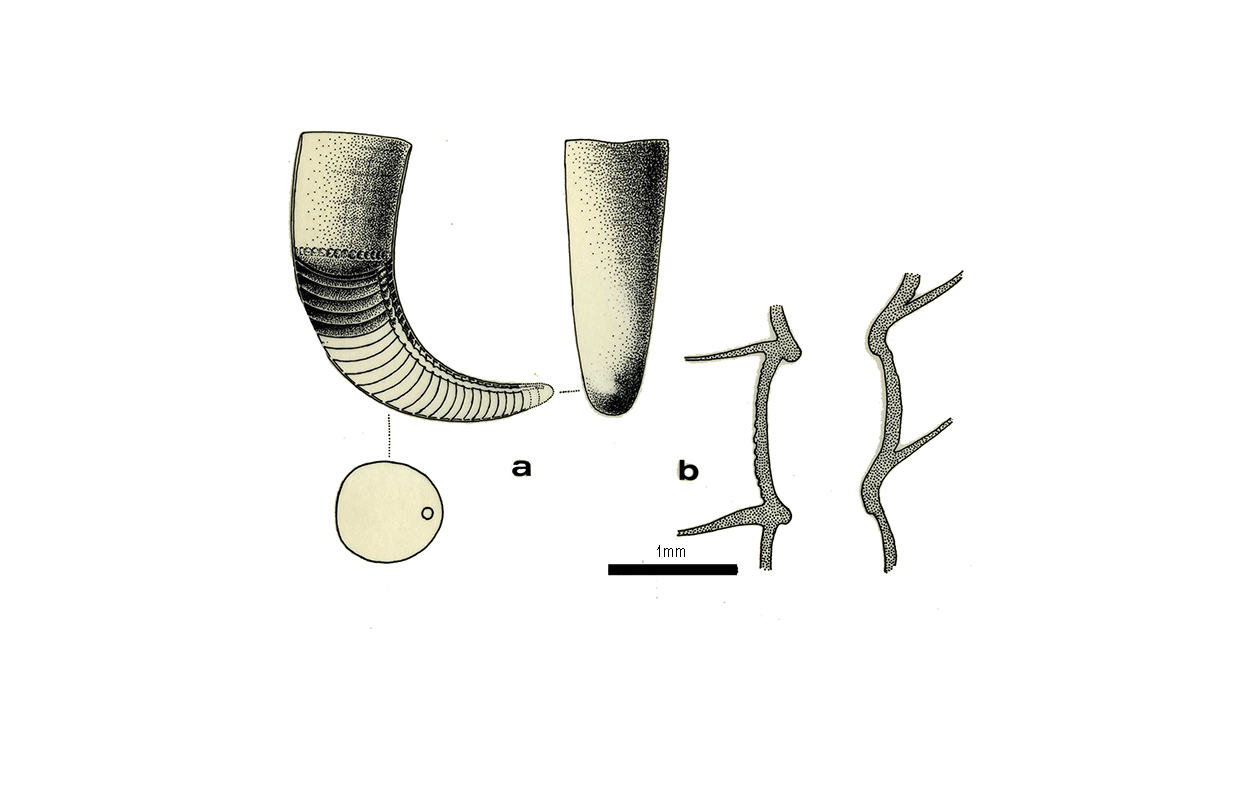Diagnoza
Horn-like curved shell elliptic in cross section, with the long axis running dorso-ventrally; surface smooth with indistinct transverse striation; longitudinal
ribs discernible on moulds; gas chambers low; Siphuncle at the inner (concave) side. Porównanie
Sobolew (1912) figured one relatively large but incomplete specimen. Some additional specimens confirm the correctness of his diagnosis. The "longitudinal ribs discernible in moulds" of Sobolew are the attachment scars of retractor muscles. The dorsal (convex) side of the shell is a little flattened, whereas the ventral side is parabolic in outline. The body chamber is cylindrical without any significant terminal modifications, with a ventral rudimentary funnel sinus. The connecting rings are recrystallized. There are no deposits. The intrapopulation variability consists in shell size and coiling. The phylogenetic relations of this species are unclear. It may be a descendant of Protophragmoceras (Silurian; Discosorida) or Devonocheilus (Late Devonian; Oncoceratida). Autekologia Występowanie geograficzne Zasięg czasowy Materiały muzealne
ZPAL N/103 and N/102 Literatura
Dzik, J. 1984. Phylogeny of the Nautiloidea. Palaeontologia Polonica 45, 1-255 | | Specyfikacja |
|---|
Królestwo
ANIMALIA Typ
MOLLUSCA Podtyp
CONCHIFERA Gromada
CEPHALOPODA Podgromada
NAUTILOIDEA Rząd
Discosorida Rodzaj
Flowerites Gatunek
Flowerites sobolewi Synonimy
Cyrtoceras ellipticum Sobolew 1912, non Cyrtoceras ellipticum Lossen, 1860, | | Populacja typowa gatunku |
|---|
Holotyp
Sobolew 1912, pl. 2:5a, b (probably stored at the Charkov University). Locus typicus
Łagów-Dule, Holy Cross Mts, Poland. Stratum typicum
Platyclymenia Zone, Famennian. |
|


